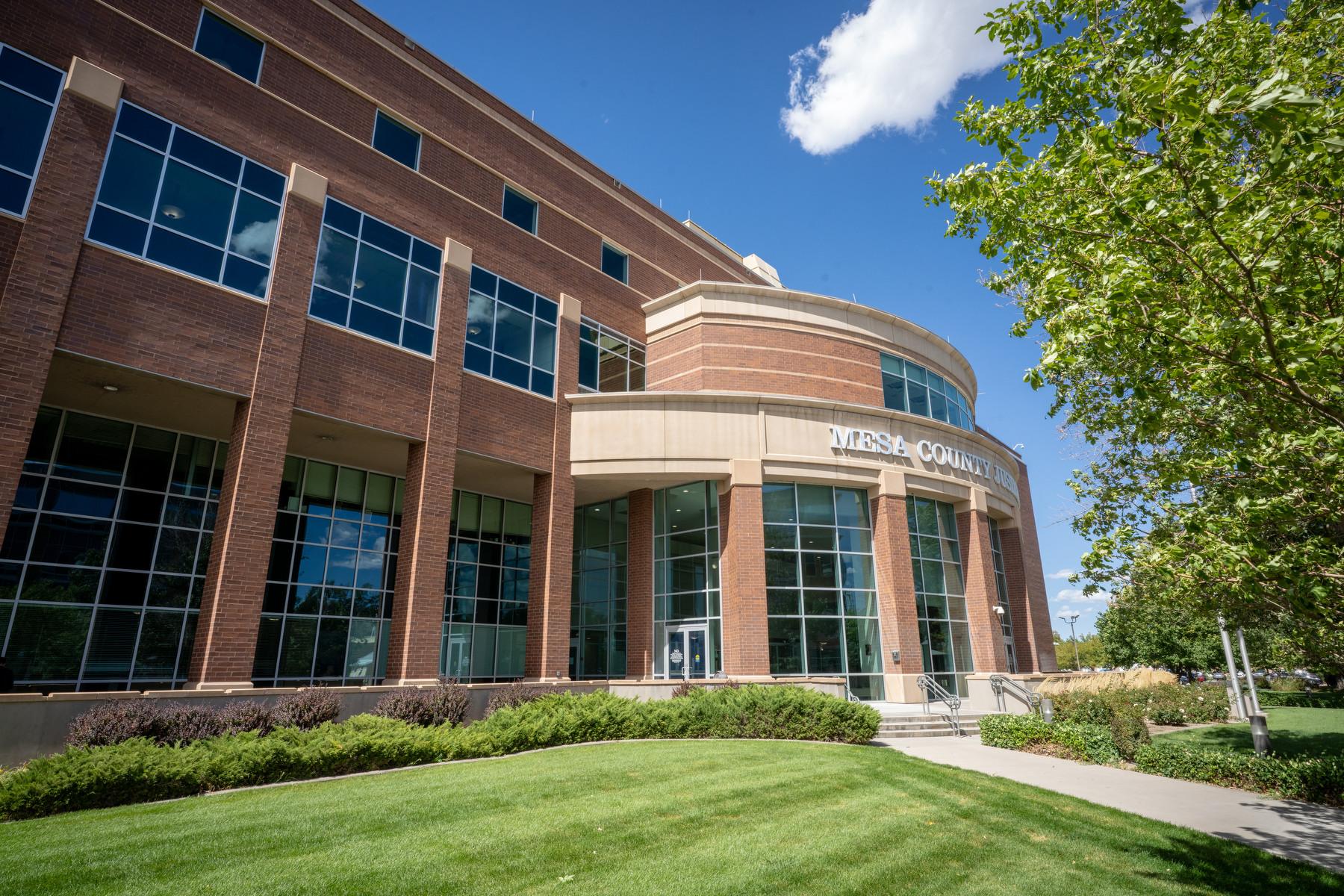
This story originally aired on Nov 4, 2015.
As a kid in neighboring Kansas, ornithologist John Marzluff wondered what happens to animals, especially birds, when people move in.
It's a simple question that has taken him years to answer.
The answer came as a surprise to him, as he explains in his most recent book "Welcome to Subirdia: Sharing Our Neighborhoods With Wrens, Robins, Woodpeckers, and Other Wildlife."
During a visit to Colorado, Marzluff, who teaches at The University of Washington, spoke with Colorado Matters host Ryan Warner in the CPR performance studio.
Marzluff's 10 commandments for living alongside wild animals in the city:
- Do not covet your neighbor's lawn.
- Keep your cat indoors!
- Make your windows more visible to birds that fly near them.
- Do not light the night sky.
- Provide food and nest boxes.
- Do not kill native predators.
- Foster a diversity of habitats and natural variability within landscapes.
- Create safe passage across roads and highways.
- Ensure that there are functional connections between land and water.
- Enjoy and bond with nature where you live, work, and play!
Read an excerpt:
Reprinted from Welcome to Subirdia by John M. Marzluff with permission of Yale University Press. Copyright (c) John M. Marzluff, 2014. Preface In my yard, reducing turf and planting native shrubs bring the song of Swainson’s thrushes each spring, while also discouraging the presence of nonnative starlings. Three pairs of spotted towhees nest under the ferns and shepherd forth stubby-tailed, earth-toned fledglings each summer to sample what our bird feeders provide. Thinning a crowded forest canopy spurs tree growth, creates standing dead trees, and supplies downed wood to the forest floor. Western tanagers, pileated woodpeckers, and delicious chanterelle mushrooms approve of these actions. Native Douglas squirrels clamber in the canopy for fir cones, which they clip and drop with a bang onto the deck. In contrast, the junco that weaves a nest of dog hair into the soil of a potted plant is perturbed by our every move. The ability of birds to thrive alongside humans is the latest testament to their adaptability. Birds have flourished on Earth for nearly 170 million years. As skilled fliers they dispersed across the globe and carved niches from the ground, the canopies of trees, and the sky. The radiation of birds, which to- day enriches Earth with more than ten thousand species, was not without setbacks. Sixty-five million years ago an asteroid slammed into the planet, extinguishing the dynasty of toothed birds known as the Enantiornithes and Hesperornithes. They had been as common as herons are today, flying among Mesozoic trees and fishing within primordial seas. Despite this lost legacy, the roots of today’s modern bird diversity persisted even as their dinosaurian ancestors perished. The agility of those in the surviving lineages allowed birds to capitalize on opportunities afforded by the advances and re- treats of continental ice sheets, the extinction of large reptiles and mammals, and now the domination of Earth by urban humans. But with each opportunity also come challenges. Today, our actions threaten many birds. Ten percent of modern birds are at risk of extinction because of our enterprise. Human conversion of native forests, shrublands, prairies, and coastal marshes into croplands and settlements is the primary reason why so many birds, as well as other forms of life, are threatened. We directly endanger birds by exposing them to new diseases, such as West Nile virus, and overharvesting those that we find tasty, like the passenger pigeon. Climate change in response to our burning of fossil fuels affects plants and the birds that depend on them. Even subtle actions challenge birds. Creating picnic areas, hiking trails, and ski areas in wild country promotes some aggressive species, such as crows and jays, which in turn prey on other birds. On islands, where space is limited and unique animals have evolved in isolation from their mainland relatives, these threats are extreme. Visitors to Hawaii, New Zealand, or islands in the Caribbean may see many beautiful birds, but few are native. My research and that of other urban ecologists suggest that, despite the great loss of biodiversity caused by our actions, we also have a lot to celebrate. I’ve spent most of my spring and summer mornings counting birds in national parks, industrial parks, and suburbs. It is not surprising that the most heavily paved portions of the city hold few birds, but it is not the case that the least disturbed places on Earth always hold the most birds. Wild reserves provide shelter for unique birds not found in the city, and they are absolutely essential. But the greatest variety of birds is often found in the suburbs. Some of this variety is otherworldly. The escaped, nonnative red-masked parakeets that colonized San Francisco’s Telegraph Hill, for example, are clearly out of place, but dazzling! Some people may question their suitability as replacements for birds lost when coastal forests were developed. But to me, the raucous squawk of a parrot is better than never again hearing the song of an extinct species. Occasionally, even uncommon birds find city life to their liking. The rare wheatear, a dapper gray bird with a black bandito mask, sometimes forgoes its typical alpine meadow and tundra haunts for the abandoned rail yards and airports of Berlin. These urban pioneers are extremely successful at nesting where trains and planes no longer tarry, but they are an exception. Other rare species shun the city. Prairie-chickens and sage-grouse need unpaved grass- lands and shrublands. They have no use for the trees we plant. Spotted owls and Hawaiian crows require large tracts of wild forest. The cities we create and the nonnative species we attract are to these forest specialists no different than the asteroid was to the toothed birds of the Mesozoic. A growing list of books review and advance the emerging field of urban ecology. Welcome to Subirdia complements these efforts by distilling from urban ecological research the important insights, illustrating them with re- search on birds and making this wealth of knowledge available to bird enthusiasts as well as students and scholars of ornithology, ecology, urban planning, and landscape architecture. The notes and references allow you to engage the literature and explore the abundance of information on urban birds that exists on the Internet. As I write I am distracted by a sizeable flock of juncos that eats seeds from my feeder, undeterred by a steady, cold rain. Throughout North America the junco, a slate-colored, sparrow-sized bird with a flashy white-sided tail, rules the urban jungle. My aim is to help us understand why. As we will learn, the secret to the junco’s success is mostly luck. By chance, the way we mix vegetation, spread grass, dig ditches, and provision bird feeders perfectly suits the junco’s requirements. We give it what it needs, and in response the junco population booms. And here is the key to its survival: its large populations enable natural selection to evolve the junco’s behavior and physique to match the challenges we humans pose. There are also unfortunate birds, however, and as we celebrate the winners, we will also learn from the losers and consider how we might conserve the birds that struggle to coexist with us. Ten principles, what I like to think of as Nature’s Ten Commandments, can help us appreciate and sustain the birds and other wild animals that live among us (see Chapters 9 and 10). Embracing these commandments can guide your development of a land ethic that holds at its core an appreciation for the community, not just the commodity, of your property. Aldo Leopold encouraged us in such practices more than sixty years ago, and with today’s growing urban population, his call is all the more relevant. With this ethic we can reap services and values from nature such as pollination of important crop plants, beauty, and health. Without it, we will continue to distance ourselves from the natural world and the benefits it provides our enterprise, culture, and well-being. |









